

• DARLEY BRIDGE • DARLEY DALE
• DARLEY HILLSIDE • ELTON • FARLEY
• HACKNEY • NORTHWOOD • ROWSLEY
• STANTON IN PEAK • TWO DALES
• UPPER HACKNEY • YOULGRAVE







• DARLEY BRIDGE • DARLEY DALE
• DARLEY HILLSIDE • ELTON • FARLEY
• HACKNEY • NORTHWOOD • ROWSLEY
• STANTON IN PEAK • TWO DALES
• UPPER HACKNEY • YOULGRAVE





Hello Readers,
So, as I understand it, last month’s message bought a few smiles to some peoples chops, which is lovely. I’m not sure if it’s chuckling at my embarrassment or that you can envisage that experience in your own lives, but either way I’m happy – life’s waaaaay too short to be serious!
April is always a mad month for us with birthdays and anniversaries and generally coming out of hibernation season (I can’t be the only person who massively over books their diary for April because the weather is *allegedly* better!!). Mr Emily and I recently celebrated 12 years of marriage, usually we like to celebrate with me playing netball and him watching but this year we excelled ourselves with a romantic trip around B&Q (other hardware stores are available). Nothing says ‘happy anniversary’ like arguing over how to fit a 6ft ladder into a 5ft car!!! Anyway, we also had a marvellous day at Harry Potter Studios, fascinating place and a great day out if you’re into that stuff, but we did have to save up…it isn’t cheap! And head’s up, the gift shop is the size of an aircraft hangar with the constant background music of either “Dad, can I have…” or “Mum, I want….”.
Anyway, the last weekend in April involves an occasion dress. So, you’d think spending a full day around Nottingham (one of the largest cities in the UK), would yield some fruits of my 15,000 steps of labour….you’d be wrong! I understand supply and demand and I get that the world has changed and occasion dresses are a rarity to hold in stock but crikey, you’d think one teeny tiny store would gift me a bone! Alas, (as I may have left it ‘til the last minute), after an internet search galore, I have more dresses to send back than I know what to do with because, naturally, they don’t fit or look horrible on the non 6ft, nor size 8 person! I was able to navigate the interweb but if you aren’t, looks like you have to wear a bin bag or a holiday dress (only thing that was readily available in shops)… So that was April!!!
Bring on May and my Ninja Warrior adventures with my Nieces and Nephew!
Happy reading,
Saturday 8th June & Sunday 9th June 2024 10am to 5pm both days
Adults £5.00 Family £12.00 PRESENT
email:enquiries@chesterfieldrailwaymodellers.co.uk


Bees—we all know they are under threat, don’t we?
But why are they so important, and what can be done to mitigate the danger they are in?
At the heart of their importance lies their role as pollinators. This seemingly simple act is crucial for the production of fruits, vegetables, nuts, and seeds. In fact, it’s estimated that one-third of the world’s food crops depend on pollinators like bees. Without them, many of the foods we rely on for sustenance would cease to exist or become prohibitively expensive.
Beyond agriculture, bees play a vital role in maintaining biodiversity. By pollinating a diverse range of plants, they contribute to the reproduction of countless species, thereby supporting entire ecosystems. From wildflowers to trees, bees ensure the survival of plant communities that provide habitat and sustenance for a myriad of other organisms, from insects to birds to mammals…to us humans!
Bees are also indicators of environmental health. Their presence and abundance can serve as a barometer for the overall well-being of ecosystems. Declines in bee populations may signal broader ecological imbalances, such as habitat loss, pesticide use, and climate change. As such, protecting bees and their habitats is not only crucial for their survival but also for the health and resilience of entire ecosystems.
In addition to their ecological significance, bees also have profound cultural and economic importance. For centuries, humans have benefited from the products of bees, including honey, beeswax, and propolis. Beekeeping, or apiculture, remains an important livelihood for many people around the world, providing income, sustenance, and even therapeutic benefits.
Despite their immense value, bees face many threats to their survival. Habitat loss, pesticide
exposure, disease, climate change, and invasive species all take their toll on bee populations. The widespread use of neonicotinoid pesticides has been implicated in the decline of bee populations worldwide, leading to calls for greater regulation and alternative pest management strategies. Fortunately, there is growing recognition of the need to protect bees and support their populations. Efforts to conserve and restore bee habitats, reduce pesticide use, and promote beefriendly practices are underway in many parts of the world. From urban beekeeping initiatives to pollinator-friendly gardening campaigns, individuals, communities, and governments are taking action to safeguard bees and their vital ecosystem services.
As individuals, we can help by:
• planting a diverse set of native plants, which flower at different times of the year
• buying raw honey from local farmers
• buying products from sustainable agricultural practices
• avoiding pesticides, fungicides or herbicides in our gardens
• protecting wild bee colonies when possible
• sponsoring a hive
• making a bee water fountain by leaving a water bowl outside
• helping to sustain forest ecosystems
• raising awareness around us by sharing this information within our communities and networks
GO ON, HELP SAVE THE BEES – THE WORLD WOULD BE A VERY DIFFERENT PLACE WITHOUT THEM!

These articles are researched and written by Laura Billingham, a local content writer and author. Laura moved to the Peak District several years ago to pursue her passion for writing. To find out more visit www.word-witch.co.uk or contact Laura on 07736





Explore your creativity, and see your digital creations come alive in our virtual world! LEVEL Centre Old






The rider is the guiding hand (wisdom) to control the way the horse needs to go. The horse is the (knowledge) because the horse uses its experience to trust and follow the riders guidance.
Wisdom and knowledge work very well together. Using one without the other, can result in confusion and problems. They support each other and benefit each other. You may have the knowledge needed to do things but then you would need wisdom to be able to understand when and where is the correct time to use them. Welcome
The Bible says -
In Proverbs 4.7 ”Wisdom is the principal thing; Therefore get wisdom. And in all your getting, get understanding.





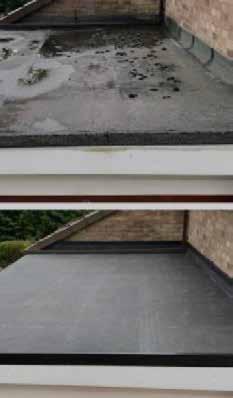


We are proud to have offered our services to the area for over 20 years building up our reputation by offering a high service at affordable, honest and reasonable prices to both residential and commercial customers. Many of our customers are return customers or gained through ‘word of mouth’ and we welcome this loyalty. 24 HOURS 7 DAYS A WEEK











London House, Matlock Street, Bakewell. Tel: 01629 814122

Well known for personal & honest service
Large selection of carpets & other floor coverings
Measuring service & professional fitting available
Call in at the shop or phone us for a free home selection service
Your Local, family business you can rely on FREE FITTING • FREE DELIVERY
FREE ESTIMATES • HOME SELECTION SERVICE
FREE FITTING BUT MINIMUM CHARGE MAY APPLY FOR SMALL AREAS AND STAIRS Celebrating 30 Years of Excellence
Method:
1. Heat your oven to 200°C/fan 180°C/ gas 6.
2. Cook the potatoes in a large saucepan of boiling water over a high heat for 15 minutes or until tender. Drain, return to the pan and mash well. Leave to cool then stir in the quark, season to taste and set aside.
3. While the potatoes are cooking, put the leeks and 2 tbsp water in a nonstick saucepan over a medium-high heat. Cover and cook for 10 minutes or until tender, stirring occasionally, then tip into a large ovenproof dish.
4. At the same time, cook the eggs in another saucepan of boiling water over a high heat for 9 minutes or until just hard-boiled. Cool under cold running water, peel, halve and add to the leeks.
For more information visit
www.slimmingworld.co.uk
This fish pie is packed full of delicious ingredients; fish, prawns, eggs, leeks in a creamy sauce, all topped with fluffy mash. Yum!
5. Pour the milk into a non-stick saucepan and bring to a simmer over a medium heat. Add the white fish, reduce the heat to low and cook for 5 minutes. Using a slotted spoon, carefully transfer the fish to the ovenproof dish, along with the prawns, herbs and lemon juice.
6. Strain the milk into a clean pan and put it over a high heat. Mix the cornflour with a little cold water and add to the milk. Bring to the boil, reduce the heat to low and cook for 2 minutes, stirring often. Pour the thickened sauce over everything in the dish, season lightly and gently mix it all together.
7. Spoon the mashed potatoes on top, making a pretty pattern with a fork if you’re feeling creative, and bake for 20-25 minutes or until the topping is lightly browned. Serve with your favourite Speed vegetables.
Serves: 6 Ready in: 1 hour 10 minutes


Ingredients:
• 1kg floury potatoes, such as King Edward or Maris Piper, roughly chopped

• 4 tbsp plain quark
• 2 large leeks, sliced
• 4 eggs
• 250ml skimmed milk
• 600g skinless and boneless white fish fillets, cut into bite-size chunks
• 200g cooked and peeled king or tiger prawns, tails removed
• ½ small pack fresh dill, chopped
• 2 tbsp freshly chopped parsley
• Juice of ½ lemon
• 1 level tbsp cornflour























Over 20 years ago we purchased our first carpets from T. Nutt & Sons who also fitted them. Today ALL the carpets and floor coverings in our four bedroomed house were supplied and fitted by the above company. We have just replaced the hall, stairs and landing carpets plus the lounge carpet but only because I wanted a change of decor!! Second time round for Nutts. The experience of choosing carpets is second to none. No-one could be more helpful with suggestions on style, colour etc. The fitters have been excellent in every way. If you want friendly support with expertise, this is the place to come!!
















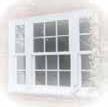





There’s nothing like a bit of gothic thriller for immersing yourself in another world and author Michelle Paver has a great talent for suspense and menace.
Her other gothic novels, Dark Matter and Thin Air, were bestsellers and Wakenhyrst, the most recent book, is another treat for fans of creepy, gripping and spooky tales.
It’s an engrossing clever story, atmospheric and dark, centred around Maud, a young girl who grows up in a
grand house on the edge of the Fens. Her mother dies in childbirth and her life is ruled by her despotic father who she adores – until she starts to find out about his secrets.
Paver builds tension brilliantly. Maud is a superb brave heroine, her father a perfect villain. Religion, superstition –and a clever narrative around the place of women in Edwardian times. What’s not to love?

Maintenance free Timber Alter native Windows & Doors from Evolution. With all the beauty of traditional timber, our wood effect windows and doors have to be seen to be believed.


Maintenance free Timber Alternative Sash Windows from the Bygone Collection. The most energy efficient, authentic, timber alternative sash window on the market. Exceptional build quality, with an unprecedented 12 year guarantee.







iconic steel replica, heritage, Art-Deco or industrial-styled glazing solutions. Aluco delivers expertly crafted, cleverly designed, and above all, authentic

Laying hedges is just one of the techniques which can be used to manage hedgerows. Other techniques include trimming and coppicing. Coppicing involves cutting stems off at ground level to encourage the hedge to regenerate. Left unmanaged a hedgerow will continue to grow upwards and outwards and will eventually become a line of trees.

Where farmers keep cattle or sheep a good hedge is essential – although barbed wire fences can easily be erected they do not provide shelter like a hedge. Hedges are important for our wildlife, environmental, heritage and scenic value. A well-managed hedgerow is thick and bushy, an impenetrable barrier to sheep and cattle and a haven for wildlife.
Cattle will lean against a hedge and make gaps whilst sheep push through the base, hedgelaying prevents this. Cut stems are bent over at an angle, secured with stakes and in some styles binders along the top, so creating a living, stock-proof barrier. Hedgelaying is the only hedgerow maintenance


method currently available which promotes regrowth from ground level and which will ensure the health and longevity of the hedgerow. Once a hedge has been laid regular trimming will keep it in good order for up to 50 years when it may be appropriate to lay the hedge again.
There are different styles of hedgelaying across parts of the UK. Each style has been developed over many years to cope with the climate of the area, different farming practices and the type of trees and shrubs that grow in the hedge.
There are more than thirty styles recorded in the UK plus others in France, Germany and Holland. Each year the National Championship tests the skills of hedgelayers on eight of the main styles in current use.
The ones you are likely to see in the Sheffield Lakeland Landscape area are the Derbyshire and Yorkshire styles.
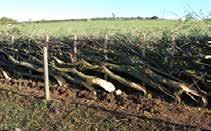
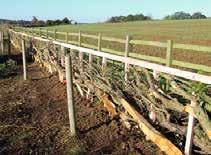


Please get in touch if you have any community history projects in your area, we might be able to help!

DG TV &AERIALSERVICES

TV, DABAND FMAERIALINSTALLATIONS

DIGITALINSTALLATIONSAND REPAIRS
SATELLITE REPAIRS
FREESATINSTALLATIONS
EXTRA TV POINTS
Qualified Engineer
10% OAPDISCOUNT - FREE CALLOUT
All Work Guaranteed, No VAT
CHANNELS MISSING?
PICTURE BREAKING UP?
TEL: DARREN ON 01246 590756
MOB: 07785 568368

ww w.dgtvandaerials.co.u k



T: 07811 646690
E: d.butterworthplumbingandheating@gmail.com
www.dbutterworthplumbingandheating.co.uk (based in Monyash, near Bakewell)

Get in touch for your free, no obligation quote:



Anyone who has ever visited a stately home will have seen the way aristocratic families lived during the 18th and early 19th century. Wandering round, we can only imagine ourselves living in the lap of such luxury. Weekend parties, evening soirees in drawing rooms adorned with hand painted wall coverings and golden framed mirrors, all illuminated by glistening chandeliers. We see ourselves dining at the grand polished tables, nibbling delicately prepared meals served by smartly dressed servants. We could sip wines carefully poured from cut glass decanters into the rows of exquisite crystal glasses set at each place. We can stroll through endless bedrooms and imagine lying back on pillows as breakfast is served on a tray, knowing that soon our maids and valets will come to help us dress.
Whilst the country houses were owned and run by the wealthy aristocrats of the day, their families were completely outnumbered by the vast number of staff needed to run the estates. As ‘Lords of the Manor,’ it was their responsibility to care for the grand houses and gardens, the stables, the outbuildings, estate land, farms and farmers and most importantly the livelihood of the people who worked for them.
So, as we wander, picturing days gone by and dream of living in such grand surroundings we should realise that the majority of us would not be those enjoying such things. It

is more than likely we would be the ones cleaning, setting fires, polishing shoes, mending clothes, cooking and serving, working in the grounds or the stable. We would be ‘below stairs.’ Below stairs was where all the work in these grand houses took place.
The Earl of Lichfield was known to employ 107 servants at Shugborough Hall near Stafford, the Duke of Westminster had over 300 indoor and outdoor servants and at Welbeck Abbey, near Worksop, the 5th Duke of Portland employed 38 kitchen servants alone.
Houses such as those mentioned were run like a military operation. Servants had to use the back stairs so they could move around the house without being seen by family or guests. Servants must always be invisible. Servants ate once the family had been served and finished their meal and then only when the Butler and Housekeeper came to the table could mealtime begin. The Butler and Housekeeper were in charge, their word was law.
The Butler supervised the male servants, which could include an under butler, valets, chauffeur and footmen. The Housekeeper supervised the maids. There were ladies’ maids, who dressed the women of the house, parlourmaids who took care of service in the family rooms and housemaids who would do the cleaning and polishing work around the house. Housemaids had to get up as early as 5.30am to light all the fires in the house. Even below stairs, servants maintained a distinct hierarchy amongst themselves.
Cook held a special place. Though answerable to the Housekeeper, the cook ruled her own domain. She would be in charge of an army of kitchen maids, scullery maids and stillroom maids. Anyone who has ever
seen Downton Abbey will know how poor Mrs Patmore is worn to a frazzle during most episodes with constant


In Bakewell Old House Museum, we have a number of interesting examples of kitchen paraphernalia, typical of that used in a Victorian Kitchen. Small moulds that were used to shape ices or other delicacies for the table, butter pats and gingerbread presses, with intricate patterns and cutters for sweetmeats. We even have a wonderful, sectioned spice tin which, when full of exotic spices and herbs, would have been so precious it had to be locked away, by the Butler, for safe keeping.
We will be open and happy to welcome you from 25th March 2024. And don’t forget our popular group tours of the town, tours of the museum and ghost tours are all available as are museum tours for schools. Please see the website for opening hours and prices. Alternatively contact the museum to book or for details of tours.














Families — we all have them. Be they the ones we are born into, or the ones we create with other like-minded souls during our lifetime.
So important are families to us that the United Nations even has a designated day set aside, 15 May each year is The International Day of Families. A day that (allegedly) “provides an opportunity to promote awareness of issues relating to families and to increase the knowledge of the social, economic and demographic processes affecting families”.
Very grandiose.
But there is an important message behind this statement, namely that families ARE important to the wellbeing and economic success of a nation.
When birth rates slow down, as they are doing, women around the globe are more likely to join the labour market – thus increasing not only their prosperity, but the prosperity of their nation. On the other hand, smaller families are less likely to cope with care obligations – looking after older family members, for example.
There’s never a win-win, is there? Back to families…
In some parts of the world, several generations live under one roof. Caring for older relatives is a given, and it would be unheard of to place a loved one in a care facility – unless for medical reasons.

Now, unless the caring is split amongst family members, there is the distinct possibility that
the burden will fall unfairly on one family member. Possibly taking that person out of the paid workforce and restricting their economic opportunities.
Without being sexist (or should I be saying “genderist” these days?) that person is more likely than not to be a woman who may already have lost out on the career and pension ladder by taking time out to bear and raise children.
Of course, that person may be perfectly happy for the burden of care to fall on their shoulders, but what if they aren’t? What if they become a seething pot of resentment? How comfortable would family life be in that situation?
The solution, of course, is for families to refocus to reflect the 21st century. It is no longer a given that a family comprises a mother, father, and children, so our ideas about family life should no longer be predicated on that “nuclear family”.
If mum wants to be a stay at home mum and can afford to…great!
If dad wants to be the one at home with the kids…amazing!
Two mums? Two dads? Cool, so what?
One parent family? Kudos to them for coping single-handedly!
As long as love, care, and respect are present in a family setup, it really doesn’t matter what a family looks like…does it?











These puzzles are devised by the brilliant Professor Rebus. For more of his puzzles visit www.pitcherwits.co.uk

Pitcherwits® are crossword puzzles where some of the clues are in pictures.
Sound easy? It’s not called “Pit-your-wits” for nothing!
The mixture of cryptic and picture clues, combined with Professor Rebus’ unique sense of humour, will keep you entertained for hours.
Across
6 Cut the picture of the harvest (4)
7 Noisiest part of after-dinner speech (3)
8 Abundantly alcoholic? (4)
14 Sky pilot gives up posy for Scotswear (4)
15 Hit, from hot-air propellor (3)
16 Opposed to the freeze of the car? (4)

17
Across
1 Left Vienna to become the last item (5,5)
9 Download a version of wild arboretum? (8)
11 Bit of monochrome shading can be hard to pin down (4,4)
17 Beef, Duke? (10)



Down
3 Bland and quiet Diva? Unlikely! (5)
4 She’s into ballerina diagnostics (5)
12 Tiger-eye? Get away, somehow it’s a nest! (5)
13 A vial, snapped open for help (5)
Down
1 We make lifelong attempts to be in blue state (7,3)
2 Why a car crashed into an architectural feature (7)
5 “Founded a nation, did I? That’s just as well!” (2,8)
10 Losing fluid because of broken linkage (7)




Down: 1 Proposition, 2 T b a, 3 Gas, 4 Non-adhesive, 6 Go to sea, 7 Not here, 8 Engrave, 14 Rev, 15 Sit.
Across: 1 Patrol wagon, 5 Agonies, 9 Omit, 10 Gird, 11 Other, 12 Iris, 13 Ache, 14 Rameses, 16 Naval battle.
ANSWERS FOR LAST MONTHS PITHERWITS
These puzzles are devised by the brilliant Professor Rebus. For more of his puzzles visit www.pitcherwits.co.uk





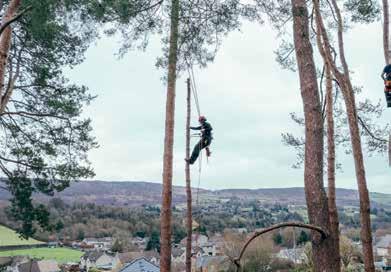









May is such a brilliant time in the garden. Time to plant out, sow for later in the summer, take cuttings to give you more plants for free. It can’t get any better than this.
It’s also a good time to prune forsythia to keep a bright bushy shape and plenty of blossom next year.
Tender plants which have been started off indoors can be hardened off now – take them outside during the day and bring under cover at night for a few days then they won’t be shocked into slower growth. You also need to be careful with baskets and containers. They can be planted up as soon as it feels like the frosts are over but have a couple of rolls of fleece handy if it feels like it’s going to be a cold night.
If you’ve got seedlings growing in rows or pots thin them out once they’ve got a couple of proper leaves (ie not the little leaves that emerge as they start to grow). This way they’re less likely to suffer from fungus and they have a better chance of flourishing if they’re not having to fight for space.
Watch out for bright red lily beetles. They can attack fritillaries as well as lilies and will very quickly decimate your plants.
You can keep on sowing bright summer annuals in beds – they’ll give you bright colour around the end of July and August when bare patches start to show.
Feed your daffs and tulips with a liquid fertiliser now to encourage a good strong display next year.

•

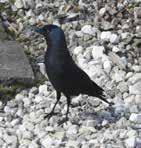
From autumn into late winter the garden visiting birds have grown in numbers and diversity. Then, a few weeks ago as the first warmth seemed to arrive, many of the birds reduced. Night-time temperatures make a big difference because if it is very cold then small birds burn up body fat. This needs to be replenished the following day and as a matter of urgency – if they don’t refuel then small birds die. Indeed, this is why our garden feeders become so important in wintertime. However, a couple of cooler nights brought the numbers back up and whilst the titmice (blue, great, and coal tits) have never got back to the highs of a couple of months ago, the finches in particular have been doing very well. Usually, a winter visitor I think the siskins may be stopping to breed locally, with several still on my feeders at any one time. They are joined by greenfinches, bullfinches, chaffinches, and goldfinches, all of which will, it seems, breed in or around the garden.
Jackdaws have returned to nest in a neighbour’s chimney stack, and the local carrion crows have a nest and territory in a nearby woodland. Both species are coming to the garden to feast on the hanging fat-balls. Also in the wood, a chiffchaff started singing in late March almost like somebody just threw a switch and the song ‘chiff-chaff, chiff-chaff, chiff-chaff’ started up. This is not to be confused with the bi-syllabic, repeated ‘seesaw’ of the local great tits. Another loud and insistent call is that of the nuthatches that hold territory and occasionally come to the feeders. At this time of year, the repeated ‘chwit-chwit’ and the loud, ‘kee-kee-kee’ are

very distinctive. Much of the bird activity is now settled on establishing a breeding territory whilst attracting and protecting a suitable mate. But levels of activity will carry on growing as summer-breeding migrants pour in from April onwards. As always, the period from May to August promises to be a very busy time for the songbirds of the Peak District!
Along with new arrivals from the south, many of our winter birds will have departed northwards to their own breeding grounds. This may be the far north of Britain or else back into northern Europe or even Iceland. This is a time of great change, and for birds such as the starling for instance, our winter population includes gatherings of hundreds of thousands or even up to a million birds. Some of these breed locally but many head back across Europe for the summer. In Russia for instance, the return of the starling is viewed as a harbinger of springtime, very much as we await the coming of the swallow back from Africa. Even our population of winter blackbirds mixes those which reside here and breed locally, and a big influx of continental birds from across the North Sea. Of course, once all this movement is settled and the birds have bred, then it will all start over again for the next winter period.











Which soap do you remember from your childhood?
There were many brands to choose from in the 1960s and 70s like Lux or Camay Beauty soaps where the model on the television advert demonstrated how to use the soap by rubbing in circular movements blobs of lather on her cheeks. My granny was not impressed when I tried this method and she told me to go back and wash the whole of my face.
During WW2, soap was rationed as the fat and glycerine from it was needed to make explosives and for other military uses.
From 1942, four coupons were given each month, and each coupon was worth 4oz hard soap, 3oz toilet soap, half an ounce of liquid soap, 6oz soft soap, 3oz soap flakes or 6oz soap powder. Shaving soap was never rationed but became scarce as did the other types.
Soap operas from radio (1930s) and TV (1950s) were so called because they were sponsored by soap manufacturers.

Washing powders like Oxydol and Rinso had to perform more than one household task.
The wartime Rinso packet had instructions for how to use for laundry and dishwashing.

Knight’s Castille, Palmolive, Pears, Fairy, Sunlight, Imperial leather, Carbolic, Lifebuoy, Coal tar, Pit Head

Bath soap if your father was a miner, were the types I grew up with. To imagine my parents and grandparents having to go without what we regard as basic cleaning products and five inches of water in your bath for the whole family a week, makes me glad I didn’t have to live through those times.
Janet and Paul Barrass are All Around the Shire. Find us on or email: oldfield512@btinternet.com





✽ 2 spacious en-suite bedrooms
✽ A fully enclosed garden
✽ 2 small to medium dogs welcome (3 upon request)
✽ Fully equipped kitchen, including an American style fridge freezer


✽ Perfect for exploring the stunning Northumbrian Heritage Coastline
✽ Close to a range of dog friendly pubs, cafes and restaurants in stunning Warkworth
✽ We have fast fibre Wi-Fi and smart TV’s
Search ‘The Little Red Hen House’ at:

Treat yourself to a luxury break at the 4* Gold Award winning Little Red Hen House. An elegant and cosy holiday home just a 7 minute drive from award-winning and dog-friendly Warkworth beach. www.coquetcottages.co.uk








